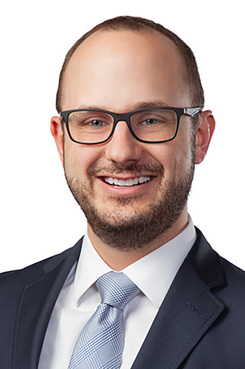Demystifying Social Media Discovery
Social media escapes an easy definition, but you know it when you see it.
August 30, 2019 at 10:38 AM
6 minute read
 Todd Heffner of Jones Walker. (Courtesy photo)
Todd Heffner of Jones Walker. (Courtesy photo)"Social media information is treated just as any other type of information would be in the discovery process." Locke v. Swift Transportation Co. of Arizona, LLC, No. 518CV00119T, 2019 WL 430930, (W.D. Ky. Feb. 4, 2019). Seems simple enough, yet the idea of social media discovery still seems to frighten most litigators.
Let's take a step back for a moment and consider email, which is now commonplace in discovery. For email to be part of discovery, it needs to be nonprivileged, "relevant … and proportional to the needs of the case." Fed. R. Civ. Pro. 26(b)(1). Does including email in discovery frighten most litigators? No. Do most litigators actually know the technical details of collecting and producing email? No. So while it would be helpful to understand the technical details of collecting data from various social media platforms (discussed briefly below), what's more important is understanding social media on a more basic level: how a particular social media platform has nonprivileged, relevant and proportional information for a particular dispute. That's what we'll focus on with this article: what parts of social media might be relevant to a dispute and what that means for both the requesting and producing parties.
Before we dive in, can we define social media? Not easily. It has become a catch-all term for many different platforms—from Facebook to YouTube to Slack to many others—that, at times, can seemingly share nothing in common but can be oversimplified for purposes of this article into three broad categories: standard social media platforms (Facebook, LinkedIn, Twitter, Instagram, YouTube), messaging applications (WhatsApp, Snapchat, Wickr), and messaging and collaboration applications for the workplace (Slack, Microsoft Yammer). In other words, it escapes an easy definition, but you know it when you see it.
From the requesting party standpoint, the starting place needs to be a basic understanding of how each of these platforms function: is it primarily for sharing photos (Instagram) or is it an analog for text messages (WhatsApp). That will, in turn, dictate how requests for production are phrased, because, just as with all forms of discovery, requests for production covering social media should be as specific as possible. Overbroad requests, such as the plaintiff's entire Facebook account, will not get you very far. See, e.g., Ye v. Cliff Veisman, Inc., No. 14-CV-01531, 2016 WL 950948, at *3 (N.D. Ill. Mar. 7, 2016) (denying request to access entire Facebook archive because request was not limited by time or relevant content). In requesting social media information, therefore, you should describe what type of information you want and be prepared to explain why that subset of all possible social media is relevant and proportional to the needs of your case.
Possible reasons for relevance include: (1) social media postings reveal a party's physical or mental capacity following an accident, procedure or other key event; (2) a party's social media postings might indicate their whereabouts—perhaps confirming an alibi or indicating what they were up to on a day they missed work; and (3) many different social media platforms, not just the ones built primarily for messaging, allow for direct messaging between users. This last category means that many different social media platforms may include the same types of information contained in text messages or email.
The next thing to understand as the requesting party is the production format for a particular platform—this is where a little bit of technical knowledge can go a long way. If you're requesting the contents of a messaging platform, a nonnative production—i.e., just the text of the conversation (preferably with some basic metadata)—may suffice. But if you're requesting Facebook posts, you may prefer some screenshots of how the information looked on the platform itself. If it's a platform you don't use yourself, consider giving it a test run to get a better feel for it.
For the party that is potentially producing social media, perhaps the most important step you can take is to ensure that your client is preserving the relevant social media content. How this is achieved will depend greatly on the particular platform. At a minimum, have a conversation with your client to learn which social media platforms they use and how they use them, and admonish your client not to intentionally delete anything. Next, if you don't understand how WhatsApp chats are preserved, for example, and you need to make sure they are preserved, take the time to figure it out, or there are plenty of consultants who can help with preservation, collection and production. Failing to preserve social media evidence can have just as severe of consequences as failing to preserve other types of evidence.
Finally, requirements of possession, custody and control for social media include some intricacies, which this article will simply put on your radar with a couple of examples (a full discussion could be its own article, so be sure to research the particulars of your jurisdiction): (1) if a user saw a posting on a particular platform that has since been removed, they are unlikely to have the right to get the posting from a third party; and (2) an employer is unlikely to be able to provide information from the personal social media accounts of its employees.
Remember where we started with this article: Social media evidence should be handled the same way as any other evidence. Hopefully thinking of it in those terms will make it less scary. Also note that this article barely skimmed the surface, so if you want to read more about social media discovery, consider starting with "The Sedona Conference, Primer on Social Media" (Second Edition," 20 Sedona Conf. J. 1, forthcoming 2019), available here.
Todd Heffner is a construction litigator and ediscovery specialist with Jones Walker. Contact him at [email protected].
This content has been archived. It is available through our partners, LexisNexis® and Bloomberg Law.
To view this content, please continue to their sites.
Not a Lexis Subscriber?
Subscribe Now
Not a Bloomberg Law Subscriber?
Subscribe Now
NOT FOR REPRINT
© 2025 ALM Global, LLC, All Rights Reserved. Request academic re-use from www.copyright.com. All other uses, submit a request to [email protected]. For more information visit Asset & Logo Licensing.
You Might Like
View All
A Plan Is Brewing to Limit Big-Dollar Suits in Georgia—and Lawyers Have Mixed Feelings
10 minute read

Trending Stories
- 1Uber Files RICO Suit Against Plaintiff-Side Firms Alleging Fraudulent Injury Claims
- 2The Law Firm Disrupted: Scrutinizing the Elephant More Than the Mouse
- 3Inherent Diminished Value Damages Unavailable to 3rd-Party Claimants, Court Says
- 4Pa. Defense Firm Sued by Client Over Ex-Eagles Player's $43.5M Med Mal Win
- 5Losses Mount at Morris Manning, but Departing Ex-Chair Stays Bullish About His Old Firm's Future
Who Got The Work
J. Brugh Lower of Gibbons has entered an appearance for industrial equipment supplier Devco Corporation in a pending trademark infringement lawsuit. The suit, accusing the defendant of selling knock-off Graco products, was filed Dec. 18 in New Jersey District Court by Rivkin Radler on behalf of Graco Inc. and Graco Minnesota. The case, assigned to U.S. District Judge Zahid N. Quraishi, is 3:24-cv-11294, Graco Inc. et al v. Devco Corporation.
Who Got The Work
Rebecca Maller-Stein and Kent A. Yalowitz of Arnold & Porter Kaye Scholer have entered their appearances for Hanaco Venture Capital and its executives, Lior Prosor and David Frankel, in a pending securities lawsuit. The action, filed on Dec. 24 in New York Southern District Court by Zell, Aron & Co. on behalf of Goldeneye Advisors, accuses the defendants of negligently and fraudulently managing the plaintiff's $1 million investment. The case, assigned to U.S. District Judge Vernon S. Broderick, is 1:24-cv-09918, Goldeneye Advisors, LLC v. Hanaco Venture Capital, Ltd. et al.
Who Got The Work
Attorneys from A&O Shearman has stepped in as defense counsel for Toronto-Dominion Bank and other defendants in a pending securities class action. The suit, filed Dec. 11 in New York Southern District Court by Bleichmar Fonti & Auld, accuses the defendants of concealing the bank's 'pervasive' deficiencies in regards to its compliance with the Bank Secrecy Act and the quality of its anti-money laundering controls. The case, assigned to U.S. District Judge Arun Subramanian, is 1:24-cv-09445, Gonzalez v. The Toronto-Dominion Bank et al.
Who Got The Work
Crown Castle International, a Pennsylvania company providing shared communications infrastructure, has turned to Luke D. Wolf of Gordon Rees Scully Mansukhani to fend off a pending breach-of-contract lawsuit. The court action, filed Nov. 25 in Michigan Eastern District Court by Hooper Hathaway PC on behalf of The Town Residences LLC, accuses Crown Castle of failing to transfer approximately $30,000 in utility payments from T-Mobile in breach of a roof-top lease and assignment agreement. The case, assigned to U.S. District Judge Susan K. Declercq, is 2:24-cv-13131, The Town Residences LLC v. T-Mobile US, Inc. et al.
Who Got The Work
Wilfred P. Coronato and Daniel M. Schwartz of McCarter & English have stepped in as defense counsel to Electrolux Home Products Inc. in a pending product liability lawsuit. The court action, filed Nov. 26 in New York Eastern District Court by Poulos Lopiccolo PC and Nagel Rice LLP on behalf of David Stern, alleges that the defendant's refrigerators’ drawers and shelving repeatedly break and fall apart within months after purchase. The case, assigned to U.S. District Judge Joan M. Azrack, is 2:24-cv-08204, Stern v. Electrolux Home Products, Inc.
Featured Firms
Law Offices of Gary Martin Hays & Associates, P.C.
(470) 294-1674
Law Offices of Mark E. Salomone
(857) 444-6468
Smith & Hassler
(713) 739-1250







